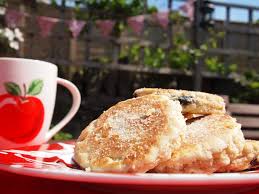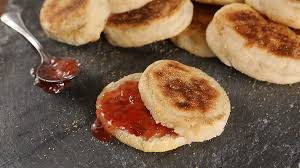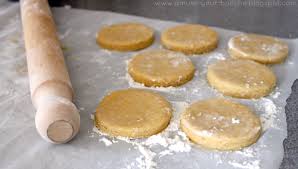The Baker’s Dozen – Welsh Cakes

Seguro que nunca has comido una Welsh cake. ¿Te gustaría probarlas? Te traemos la receta en inglés para que las hagas y practiques el idioma.
Welcome back to The Baker’s Dozen where we will continue to look at the world of baking, cakes and puddings.
For this entry we shall continue with the theme of scones by introducing the ‘griddle scone’ or as it’s more commonly known….the Welsh Cake. Why griddle scones? Well, it’s because they are baked on a griddle rather than in the oven as you would do for traditional scones.
It may come as no surprise from their name that these little cakes are typical in Wales but did you know that they are also common in Patagonia, Argentina? This is due to a number of people from Wales settling there in 1865. Even to this day there are still Welsh speakers, schools and churches in Patagonia, and the tearooms serve Welsh Cakes.
Welsh cakes seemed to be an ubiquitous cake in the households of my childhood; every family made them and everyone had their own recipe. In our family, we love them and although they are traditionally made with currants, we never included them as my brother hates currants (to be honest, they are nicer without). I would say that my brother has a greater love of welsh cakes than any other person I know and they’re quite magic in his possession………….they miraculously disappear without anyone ever seeing or tasting them.
Below you will find our family recipe for Welsh Cakes but any search on the internet will give you a recipe with different variations, with currants, mixed spice or cinnamon. It all depends on your taste as to whether you add these or not; at the end of the day there is no definitive recipe. As we always made plain welsh cakes we would regularly split them in half, put some jam in and then put it back together to make a sandwich or as it’s known, a jam split. This is a common practice more in South Wales than other parts of the country.
Welsh Cakes
450g self-raising flour, sieved
110g salted butter
110g lard
2 eggs beaten
175g sugar
1/2 teaspoon of mixed spice (optional)
Milk, if needed
- Take your heavy iron griddle and place it on the hotplate or gas ring of your cooker over a medium heat. If you can’t find a griddle then just use a good thick skillet and it will work just fine. Leave this to heat up whilst you’re making the dough; it can take time so it’s best to put it on first.
- Put the sieved flour into a bowl and add the butter and lard in cubes. Rub the fat into the flour until it looks a little like breadcrumbs. Add the sugar and mix it into the breadcrumb-like mixture. Then add the eggs and mix to combine until it forms a dough. If it feels a little dry add some milk.
- Roll out the dough until it’s about 2cm thick and cut into rounds with a fluted pastry cutter (for example, 5cm-diameter cutter).
- Rub the griddle with a little butter and wipe away the excess with some kitchen towel. Place your hand over the top of the griddle to feel the heat and once you can feel that it’s warm you can start cooking your cakes. Place the cakes on the griddle; usually you can only cook 4 – 5 at a time. Turn them only once, each side will need cooking for about 3 minutes or until they are golden brown.
- Once done, take them off the griddle and leave to cool on a cooling wire. If you want you can dust them with sugar, while they are still warm. This is something my great aunt used to do but it will make them a little sweeter than they already are.
Welsh cakes are best eaten on the day you make them, although they will keep for a day or two, but if my brother is anywhere to be seen you’ll be lucky to try them!
Vocabulary
Griddle: a heavy flat iron plate, for cooking food (parilla)
Tearoom: a small café where tea and other refreshments are served
Currant: a small dried grape
Mixed spice: a ready prepared mix of spices, cinnamon, cloves and nutmeg. Used for cooking
Cinnamon: canela
Sieve (noun): a utensil made from fine wire mesh used for straining solids from liquids or for separating coarser from finer particles. As a verb ‘to sieve’, it’s the action of putting the flour through the sieve into a bowl below.
Lard: white solid pig fat (manteca)
Skillet: frying pan (sartén)
Rub into: in baking terms it’s the action of taking a small handful of flour and butter and rubbing it between your fingers and thumbs. The action is continued taking up new handfuls until there is no flour left and the mixture looks like breadcrumbs. At this point the fat is rubbed into the flour.
Dough: masa
Fluted pastry cutter: a pastry cutter is a device, usually made from metal, for cutting shaped forms from dough. They can be of different shapes, such stars, circles, trees, bodies etc. They can have smooth edges or they can go in and out to make a little wave pattern (fluted).
Wipe away (phrasal verb): Clean excess liquid or fat off a surface by using a cloth or kitchen paper
Cooling wire: a rack where you leave food to cool down (rejilla)









